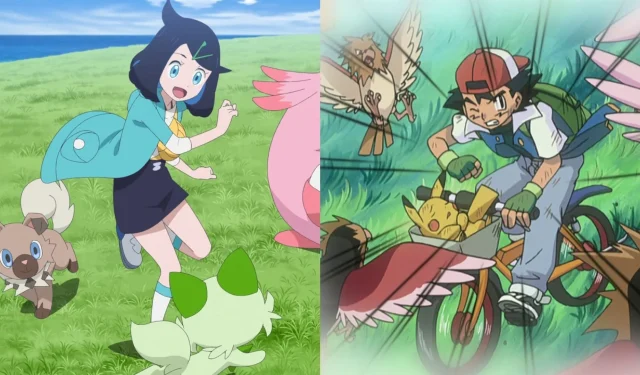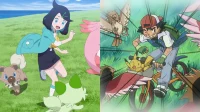After an impressive 26-year run, Ash Ketchum has officially been succeeded by Liko, marking a significant shift in the Pokémon anime landscape with the introduction of Pokémon Horizons. Liko stands out as the franchise’s first female main character, diverging from past female companions like Misty and May, who traditionally played supportive roles. Unlike them, Liko takes center stage, actively propelling the narrative rather than merely appearing sporadically.
This article will explore the ways in which Liko represents a fresh evolution in the series compared to Ash, highlighting what the writers have learned over the years. Conversely, we will also address instances where Ash left a more lasting impact on fans, largely due to the charm of his imperfections.
Comparative Analysis: Liko versus Ash in Pokémon Anime
1) Positive Aspect: Liko’s Charisma vs. Ash’s Early Brattiness
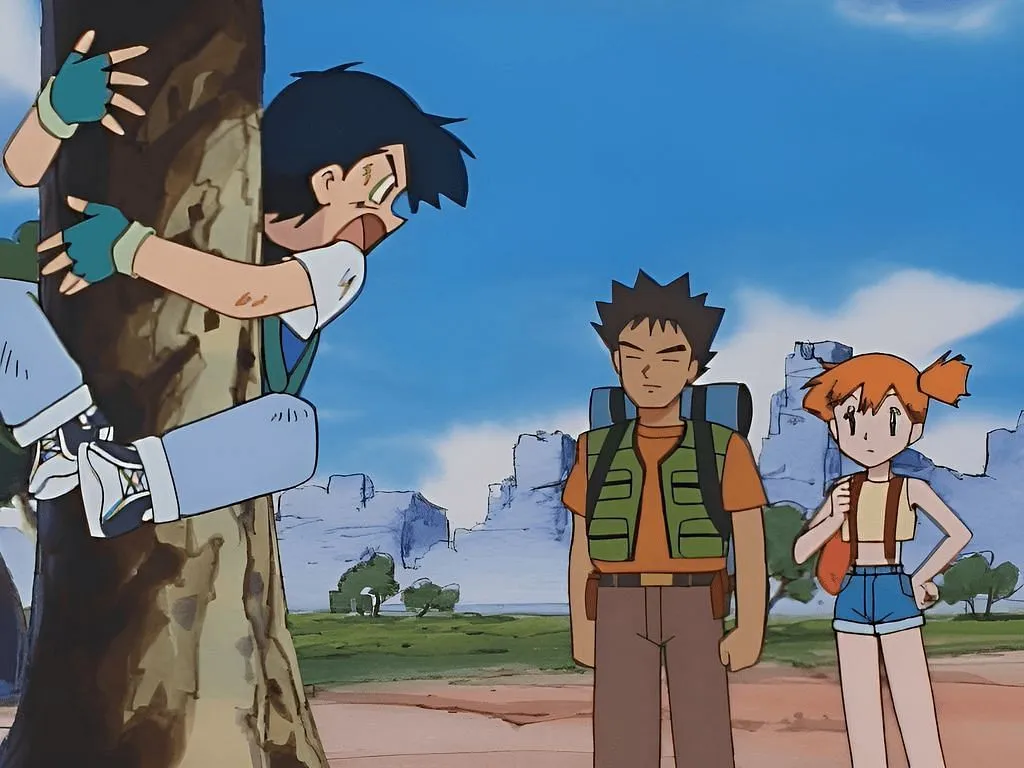
When Ash Ketchum first began his journey towards becoming a Pokémon Master, he exhibited a somewhat immature, bratty attitude. Though he cared deeply for his friends and Pokémon, his frequent spats with companions—particularly Misty—often overshadowed his character development. This behavior had tangible consequences, exemplified by his Charizard, who was notoriously uncooperative.
In contrast, Liko comes across as a more compassionate and relatable character, whose social awkwardness is portrayed as natural rather than rude. This presents her as a compelling protagonist right from the outset, offering a more engaging character arc than Ash at times could provide.
2) Negative Aspect: Ash’s Growth Through Failure Versus Liko’s Initial Strength
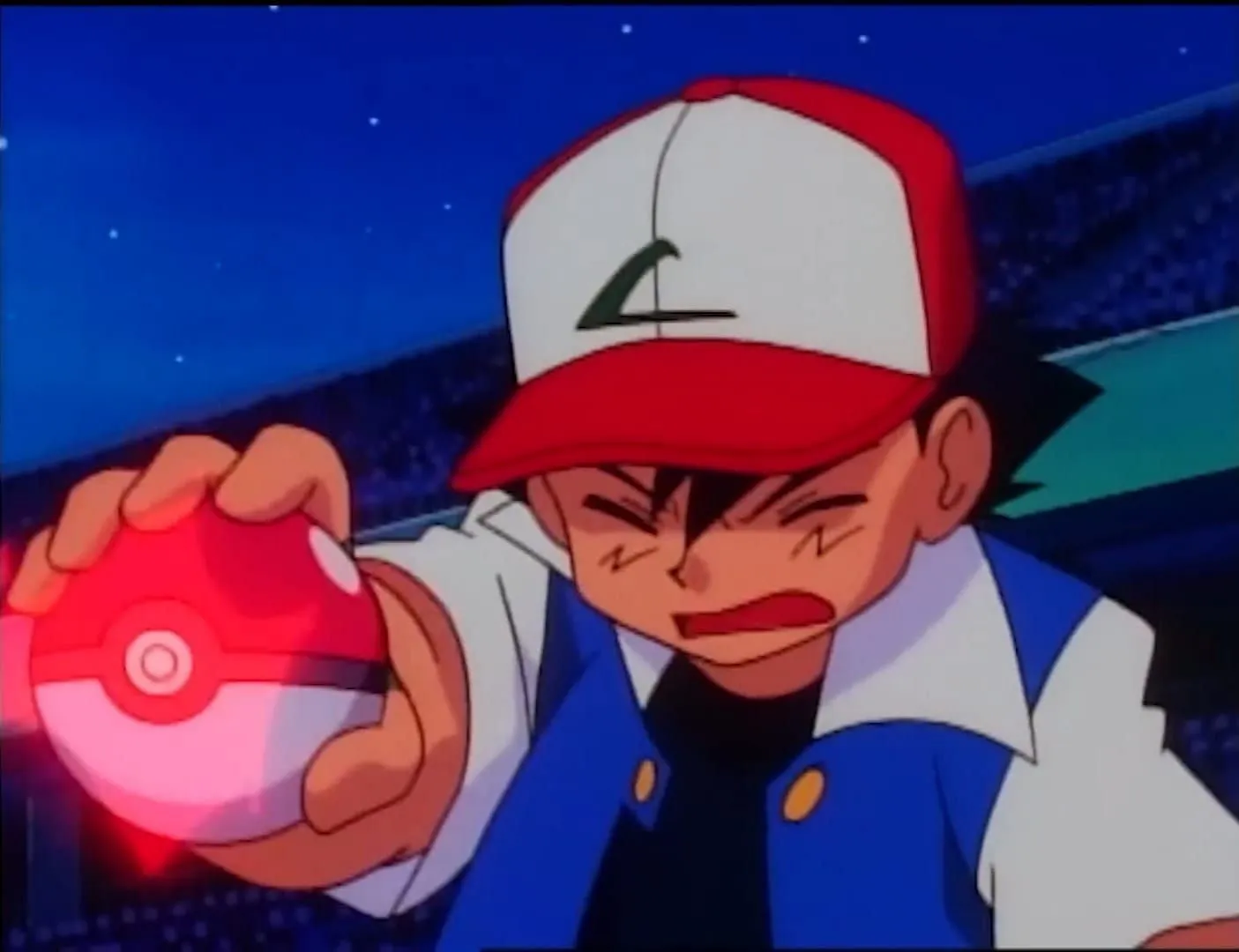
A defining feature of the Pokémon anime was Ash’s unique character development. Notably, he didn’t win a major tournament until the Alola League, a recurring joke among fans. This stood in stark contrast to many other 90s animated heroes who rarely faced defeat. Ash’s setbacks provided valuable life lessons about perseverance, humility, and growth.
One poignant moment occurred in the Top 16 match against Ritchie, where Ash had to rely on a Charizard that refused to listen to him, resulting in a painful loss. This pivotal experience forced him to confront his flaws and ultimately transformed him into a more skilled trainer and more rounded person.
With Liko’s character beginning on a positive note, her journey may lack the same depth of growth potential that Ash experienced. Her overarching narrative of learning to assert herself is a familiar trope within anime, seen in characters like Tohru from Fruits Basket and Hinata from Naruto, making her journey feel less distinctive.
3) Positive Aspect: Liko’s Focus on Fewer Pokémon Allows for Deeper Characterization
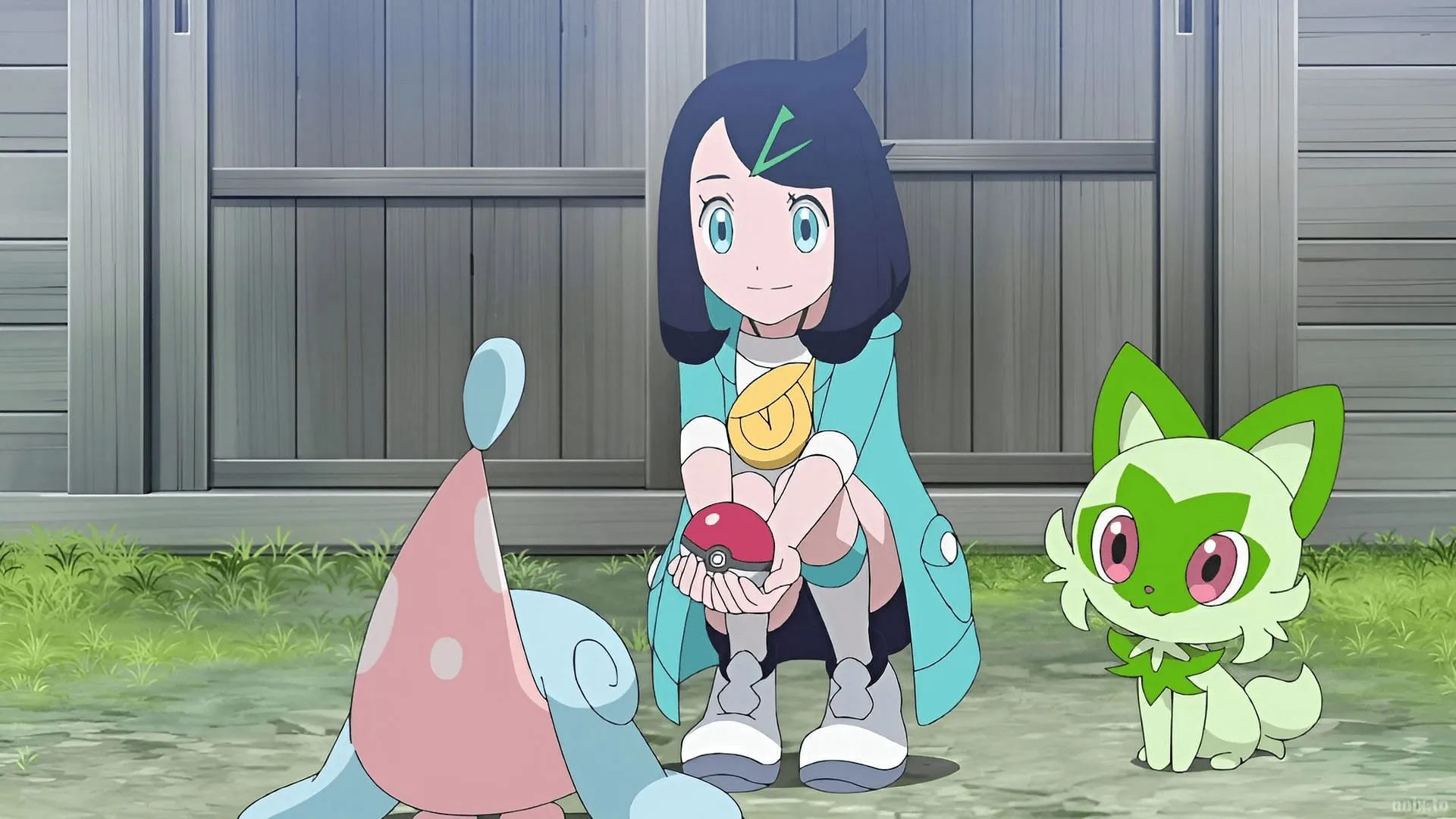
From the early stages of the anime, Ash had already amassed a diverse roster of Pokémon, often resulting in limited screen time for many of them. For instance, Ash’s Butterfree barely appeared after its evolution before being released to pursue its goals.
Currently, Liko exclusively focuses on three Pokémon: Meowscarada, Hattrem, and Terapagos. This enables each Pokémon to develop unique personalities, enhancing the storyline and making them feel more like genuine characters rather than mere plot devices.
4) Negative Aspect: Liko’s Tenure May Be Shorter than Ash’s
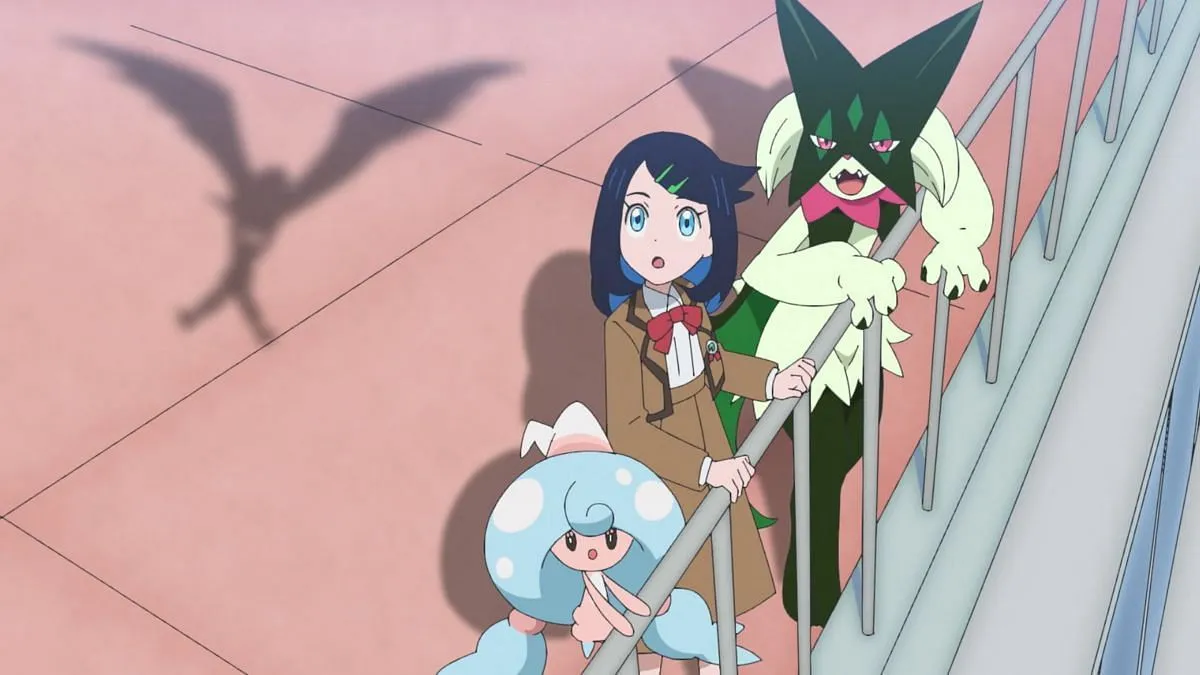
For years, Ash’s unchanging role as the lead character became a subject of jokes within the fandom, yet it ultimately lent a sense of stability. Liko, however, represents a departure from this consistency, with writers taking creative risks by aging her character mid-narrative.
This evolution indicates that Liko might not enjoy a prolonged run as Ash did. The possibility of shifting focus to new protagonists in future seasons could undercut her impact and significance, contrasting with Ash, whose enduring journey remained a testament to his character arc.
5) Positive Aspect: Liko’s Narrative-Driven Plot Enhances Engagement
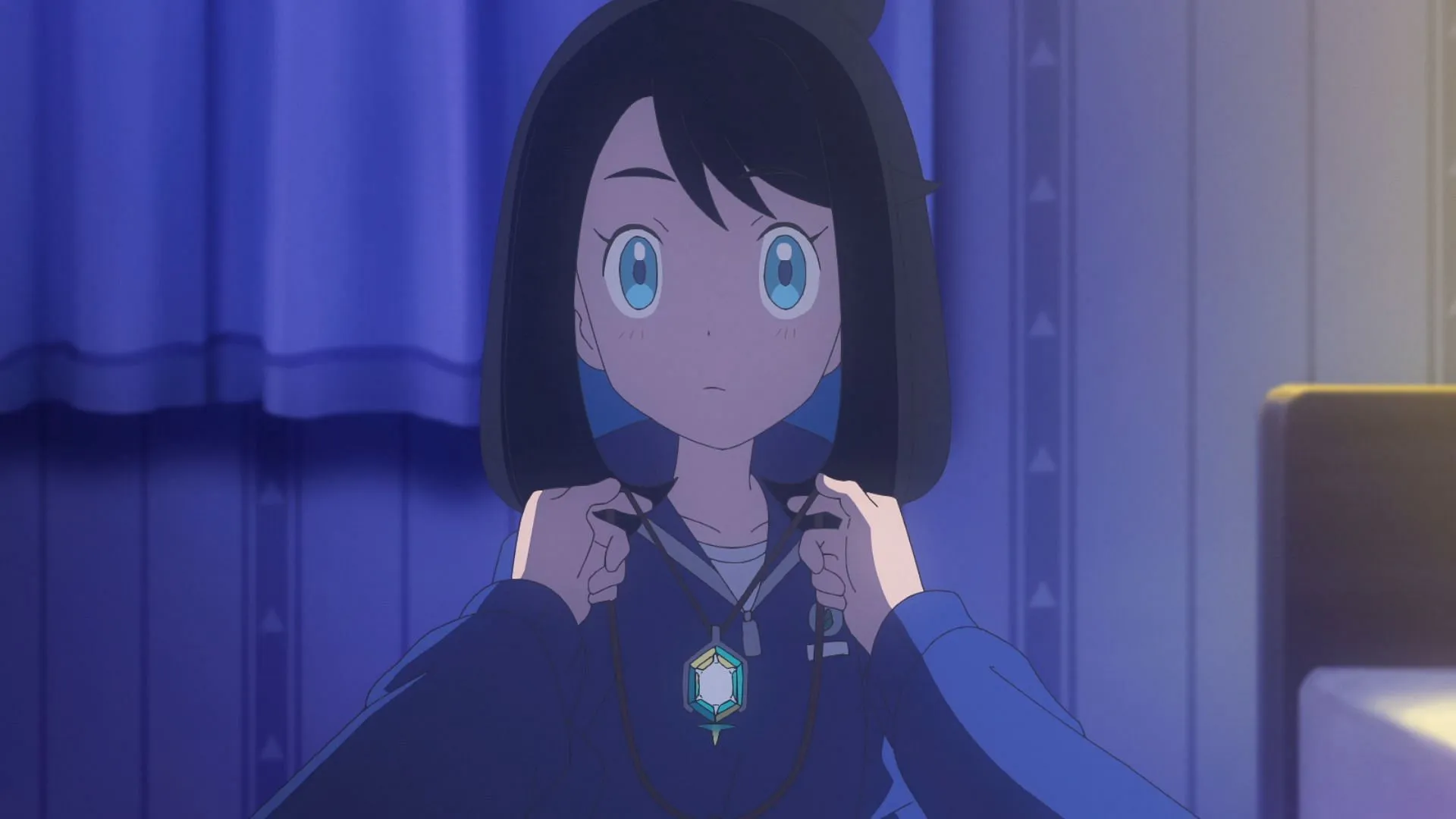
Ash’s storylines often revolved around straightforward quests for badges or tournament victories. While these narratives built anticipation, they occasionally rendered individual episodes less meaningful.
In contrast, Liko’s journey is deeply narrative-driven, intertwining with her grandmother’s pendant and the exploration of her ancestral ties. This focus on storytelling allows for significant character growth and more engaging episodes that contribute meaningfully to the plot.
